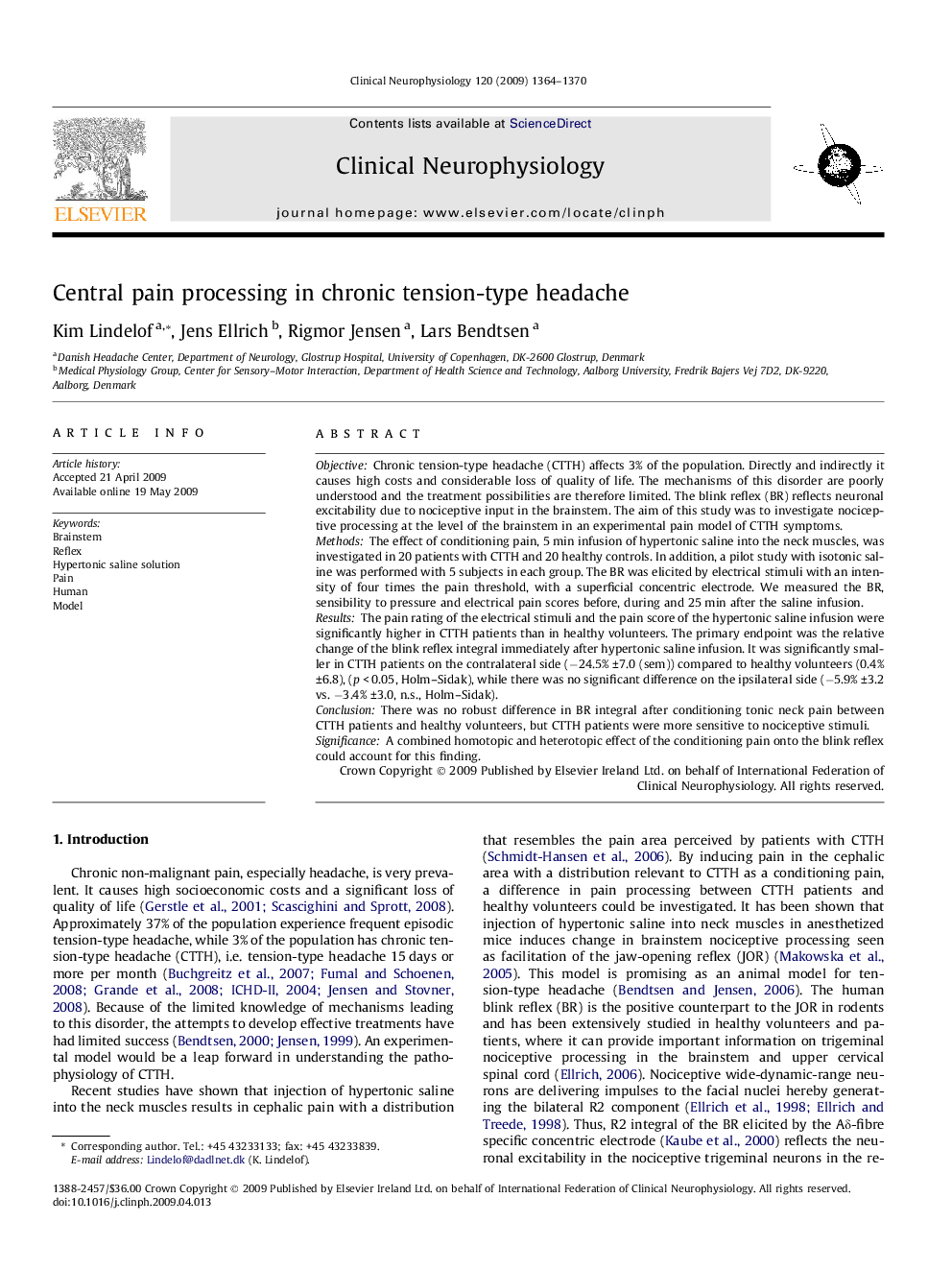| Article ID | Journal | Published Year | Pages | File Type |
|---|---|---|---|---|
| 3046570 | Clinical Neurophysiology | 2009 | 7 Pages |
ObjectiveChronic tension-type headache (CTTH) affects 3% of the population. Directly and indirectly it causes high costs and considerable loss of quality of life. The mechanisms of this disorder are poorly understood and the treatment possibilities are therefore limited. The blink reflex (BR) reflects neuronal excitability due to nociceptive input in the brainstem. The aim of this study was to investigate nociceptive processing at the level of the brainstem in an experimental pain model of CTTH symptoms.MethodsThe effect of conditioning pain, 5 min infusion of hypertonic saline into the neck muscles, was investigated in 20 patients with CTTH and 20 healthy controls. In addition, a pilot study with isotonic saline was performed with 5 subjects in each group. The BR was elicited by electrical stimuli with an intensity of four times the pain threshold, with a superficial concentric electrode. We measured the BR, sensibility to pressure and electrical pain scores before, during and 25 min after the saline infusion.ResultsThe pain rating of the electrical stimuli and the pain score of the hypertonic saline infusion were significantly higher in CTTH patients than in healthy volunteers. The primary endpoint was the relative change of the blink reflex integral immediately after hypertonic saline infusion. It was significantly smaller in CTTH patients on the contralateral side (−24.5% ±7.0 (sem)) compared to healthy volunteers (0.4% ±6.8), (p < 0.05, Holm–Sidak), while there was no significant difference on the ipsilateral side (−5.9% ±3.2 vs. −3.4% ±3.0, n.s., Holm–Sidak).ConclusionThere was no robust difference in BR integral after conditioning tonic neck pain between CTTH patients and healthy volunteers, but CTTH patients were more sensitive to nociceptive stimuli.SignificanceA combined homotopic and heterotopic effect of the conditioning pain onto the blink reflex could account for this finding.
